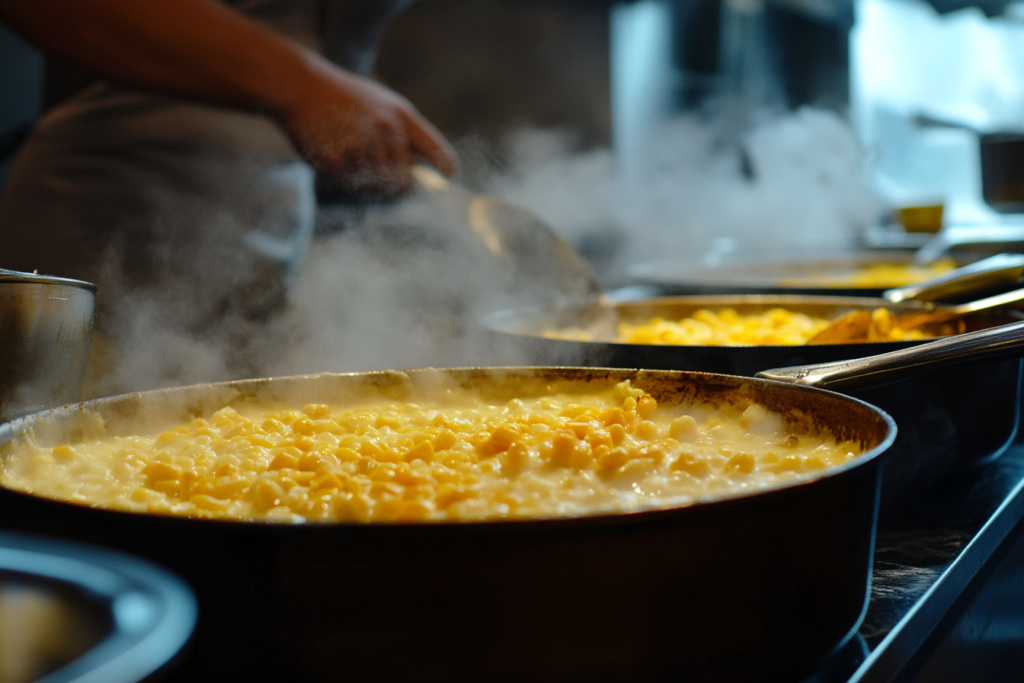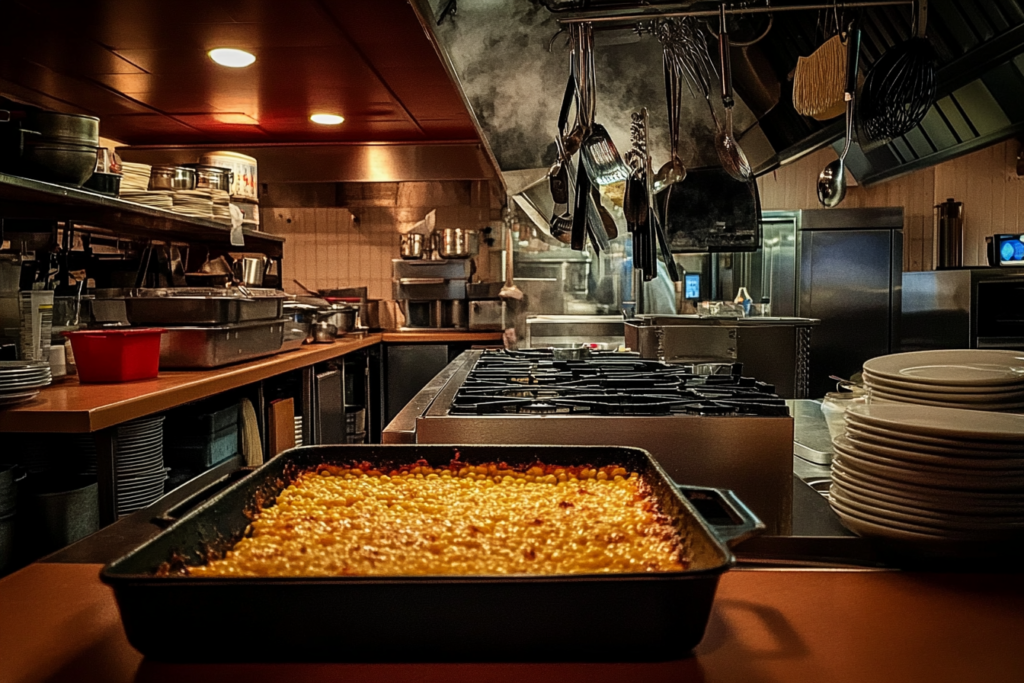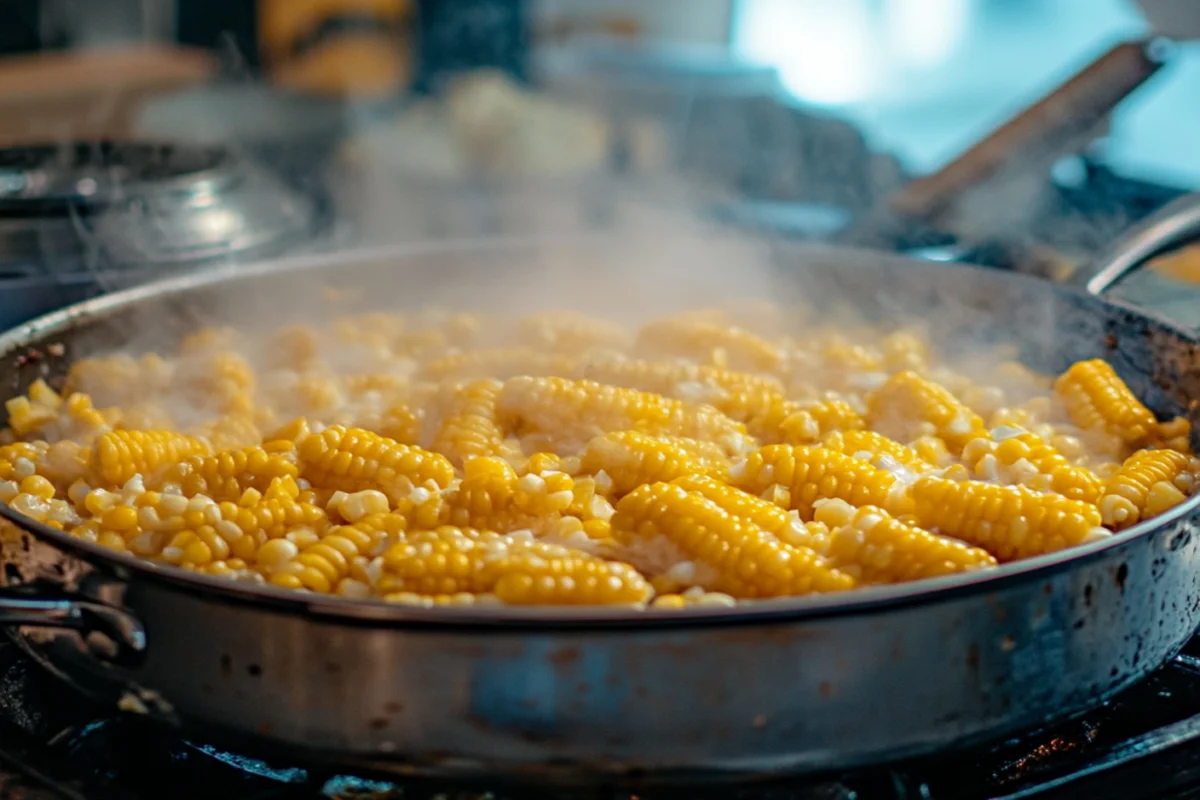Why Is My Corn Casserole Mushy? Causes, Fixes, and Tips
Corn casserole is a beloved dish in many households, offering comfort and flavor in every bite. But what happens when your casserole turns out mushy instead of light and fluffy? Understanding the reasons behind this culinary mishap can save your next meal and elevate your cooking skills. This article dives deep into the causes of mushy corn casserole, explores how to prevent it, and even shares tips for improving its texture. Let’s get started!
Part 1: Understanding Corn Casserole Texture
Why Is My Corn Casserole Mushy?
Have you ever pulled your casserole from the oven only to find it soggy and lacking structure? Mushy corn casserole often results from imbalances in ingredients, improper baking, or excess moisture from corn. While a moist casserole is desirable, too much liquid can quickly cross the line into mushy territory. The key lies in understanding the science behind the dish and making subtle adjustments to avoid this issue.
The Ideal Corn Casserole Consistency
A perfect corn casserole strikes a delicate balance between creamy and firm. It should hold its shape when served, with a golden crust that hints at a well-baked interior. To achieve this, ensure that the liquid-to-dry ingredient ratio is just right. Using quality ingredients and proper mixing techniques will help maintain this consistency, giving you a dish that’s both satisfying and aesthetically pleasing.
Common Causes of a Mushy Corn Casserole
Overuse of Liquid Ingredients
The main culprit in a soggy casserole is often too much liquid. Using canned or frozen corn without draining the excess liquid can lead to a watery mixture. Similarly, over-pouring milk or sour cream can make it difficult for the casserole to firm up.
Incorrect Baking Time and Temperature
An underbaked casserole might look fine on the surface, but its insides can remain mushy. Baking at a temperature that’s too low or removing the dish from the oven too early prevents it from setting properly. Remember, appearances can be deceiving—always check the middle!
Inaccurate Measurement of Ingredients
Getting the proportions wrong is another common reason. Too much cornbread mix? The casserole becomes dry. Too little? It ends up mushy. Accuracy is everything, so measure your ingredients carefully and double-check your recipe.
Part 2: Ingredient Factors Affecting Texture
Role of Corn Varieties in Casserole Texture
The type of corn you use can make or break your casserole. While fresh, canned, and frozen corn can all work, each type impacts the final texture differently. For instance, fresh corn adds a slightly firmer bite and bursts of natural sweetness, but it may require extra preparation to remove kernels from the cob.
Canned corn, on the other hand, often comes with added liquid that needs to be thoroughly drained to avoid making the casserole mushy. Frozen corn is convenient but must be defrosted and patted dry before use to eliminate excess moisture. Selecting the right variety ensures the dish has a balanced texture without becoming overly soggy or too firm.
Impact of Dairy Components
Dairy ingredients like sour cream, milk, and heavy cream add richness and moisture to the casserole. However, too much of these can tip the scales toward mushiness. Sour cream, often a staple in corn casserole recipes, contributes a tangy creaminess but should be measured carefully.
For a firmer texture, some cooks opt for Greek yogurt as a substitute. Milk or cream should also be added sparingly—just enough to bind the ingredients without making the mixture runny. Balancing these components is vital for achieving that perfect texture.
Importance of Binding Agents
Binding agents, like eggs and cornbread mix, are the unsung heroes of a successful corn casserole. Eggs help the casserole set by creating structure as they cook. If the mixture doesn’t include enough eggs, or if they aren’t properly mixed in, the casserole may lack stability, resulting in mushiness.
Similarly, cornbread mix acts as a thickening agent, absorbing excess moisture while adding flavor. Too little mix leaves the casserole watery, while too much can dry it out. Aim for the perfect ratio to ensure the dish holds together while remaining soft and flavorful.
Part 3: Preparation Techniques

Proper Mixing Methods
How you mix your ingredients can significantly impact the texture of your corn casserole. Overmixing, for example, can break down the structure of the batter, leading to a dense and overly moist casserole. On the flip side, under-mixing may leave clumps of dry ingredients that fail to absorb moisture evenly.
To get it just right, gently fold the wet and dry ingredients together until combined. Avoid aggressive stirring, which introduces air bubbles and can destabilize the casserole’s texture during baking.
Pre-Baking Preparations
Taking a few pre-baking steps can prevent a mushy casserole. One critical step is draining the corn thoroughly. Whether you use canned or frozen corn, excess liquid can seep into the batter during cooking, creating a soggy consistency.
For frozen corn, allow it to thaw completely before use and pat it dry with a paper towel. If using canned creamed corn, avoid adding extra water or milk, as the canned variety already has enough liquid to maintain a moist casserole.
Baking Best Practices
Where and how you bake your casserole in the oven can make a world of difference. The middle rack is typically the best spot, as it ensures even heat distribution. Placing the dish too low might result in an undercooked center, while too high risks over-browning the top before the center is fully set.
Another essential tip is to preheat the oven. Skipping this step can alter the cooking time, leaving your casserole undercooked. Make sure to bake the dish for the recommended time, but don’t hesitate to extend it slightly if the center appears too soft.
For more insights into achieving the perfect casserole consistency, check out Corn Casserole Recipe Variations.
Part 4: Troubleshooting and Enhancements
How to Fix a Mushy Corn Casserole
Sometimes, despite your best efforts, your corn casserole might still turn out mushy. Don’t worry—there are ways to salvage it!
Adjusting Baking Time
If your casserole looks golden on top but feels soft in the middle, pop it back into the oven. Cover the dish loosely with aluminum foil to prevent the top from over-browning and bake for an additional 10–15 minutes. This extra time allows the internal moisture to set without drying out the dish.
Modifying Ingredient Ratios
For casseroles that consistently turn out mushy, revisit your recipe. Adjust the ratio of liquid ingredients to dry ones. Reducing the amount of milk or sour cream slightly and adding an extra tablespoon of cornbread mix can firm up the final result. Alternatively, consider increasing the number of eggs to boost stability.
Enhancing Texture and Flavor
Once you’ve mastered the basics, why not take your corn casserole to the next level? Adding complementary ingredients can enhance both texture and taste, making your dish the star of any table.
Adding Cheese or Vegetables
Cheese is a fantastic addition, offering both flavor and a firmer texture. A sprinkle of sharp cheddar, Monterey Jack, or even a blend of Parmesan and mozzarella can create a gooey top layer while improving the overall structure.
Vegetables like diced bell peppers, onions, or jalapeños add a satisfying crunch and extra flavor to balance the casserole’s creaminess. Just ensure they’re sautéed or patted dry to avoid introducing excess moisture.
For more tips on casserole enhancements, check out Tips for Perfect Corn Casserole.
Part 5: Creative Twists on Traditional Corn Casserole

Corn casserole is already a crowd-pleaser, but adding creative twists can elevate it from comforting to unforgettable. Whether you’re looking to impress guests at a dinner party or simply want to switch things up for your family, incorporating unique flavors and textures will make your casserole stand out.
Incorporating Meaty Additions
For a heartier dish, consider adding cooked and crumbled sausage, shredded rotisserie chicken, or diced ham. These ingredients not only enhance the flavor but also make the casserole more filling, transforming it into a one-dish meal. Be sure to cook and drain meats thoroughly to avoid adding excess grease or moisture to the batter.
Vegetarian Upgrades
Vegetables can bring a delightful crunch and a pop of color to your casserole. Try mixing in sautéed bell peppers, diced zucchini, or even sun-dried tomatoes for a gourmet twist. If you love spice, chopped jalapeños or a pinch of red pepper flakes can add a touch of heat, balancing the dish’s natural sweetness.
Playing with Cheese Varieties
Cheese lovers rejoice! Don’t limit yourself to just one type of cheese—experiment with bold flavors like smoked Gouda, pepper jack, or even blue cheese crumbles. Mixing cheeses can add layers of complexity and richness to the dish, taking it from simple to sophisticated.
Experimenting with Toppings
Toppings can change the game entirely. Sprinkle crushed crackers, panko breadcrumbs, or fried onions on top before baking for a crispy, golden crust. For a sweeter variation, drizzle a bit of honey or maple syrup over the casserole before serving.
Adding these creative elements not only enhances the flavor and texture but also allows you to personalize your casserole, making it an unforgettable dish every time. Whether you’re hosting a holiday feast or preparing a weekday meal, these unique twists will have everyone asking for seconds!
Part 6: Frequently Asked Questions About Corn Casserole Texture
When making corn casserole, a variety of questions can pop up—especially when the texture isn’t turning out quite right. Below are answers to the most commonly asked questions to help ensure your casserole comes out perfect every time.
Is corn casserole supposed to be mushy?
Corn casserole should be moist and creamy but not overly mushy. A slightly firm texture with a golden crust on top is ideal. If your casserole feels overly wet, it’s likely due to too much liquid in the batter or undercooking.
Can I use fresh corn instead of canned?
Yes, fresh corn works wonderfully in corn casserole. Simply cut the kernels off the cob, ensuring they’re tender and sweet. However, you may need to add a touch more liquid to the batter, as fresh corn lacks the natural moisture found in canned or creamed corn.
How do I store leftover corn casserole?
To store leftovers, let the casserole cool completely before transferring it to an airtight container. Refrigerate for up to 3–4 days. To keep the texture intact, avoid stacking other items on top of it in the fridge.
Can I make corn casserole ahead of time?
Absolutely! Prepare the batter and pour it into your baking dish, then cover and refrigerate for up to 24 hours. When ready to bake, let the dish sit at room temperature for about 15 minutes and bake as directed. Keep in mind that slightly longer baking time may be needed.
What can I substitute for creamed corn?
If you don’t have creamed corn, you can substitute with a mix of regular canned corn and a bit of heavy cream or milk. Mash some of the corn kernels to mimic the creamy consistency. This tweak won’t compromise the taste or texture.
How do I reheat corn casserole without it becoming mushy?
To reheat corn casserole, place it in the oven at 350°F (175°C) for about 15–20 minutes, covering the top with aluminum foil to prevent drying out. Avoid microwaving, as it can make the dish soggy.
These FAQs address some of the trickiest challenges cooks face with corn casserole, offering practical and straightforward solutions. Up next, a conclusion will tie everything together with final thoughts on perfecting this classic dish.
Part 7: Conclusion
Corn casserole is a heartwarming dish that’s cherished for its simplicity and comfort, but achieving the perfect texture can be tricky. A mushy corn casserole, while frustrating, is often the result of minor missteps that are easy to fix with the right guidance.
By understanding the importance of ingredient ratios, using proper preparation techniques, and baking with care, you can transform your casserole into a golden, creamy masterpiece every time. Whether you’re troubleshooting a soggy dish or experimenting with enhancements like cheese or fresh vegetables, this versatile recipe can be tailored to suit your tastes and preferences.
Remember, the key to success lies in balancing moisture and structure. Drain your corn, measure ingredients accurately, and don’t rush the baking process. With these tips, your corn casserole will consistently turn out moist but firm, creamy yet structured—a dish that will impress at any gathering.
So the next time you find yourself asking, “Why is my corn casserole mushy?”, you’ll know exactly how to answer—and fix it! Enjoy the process, and happy cooking!

